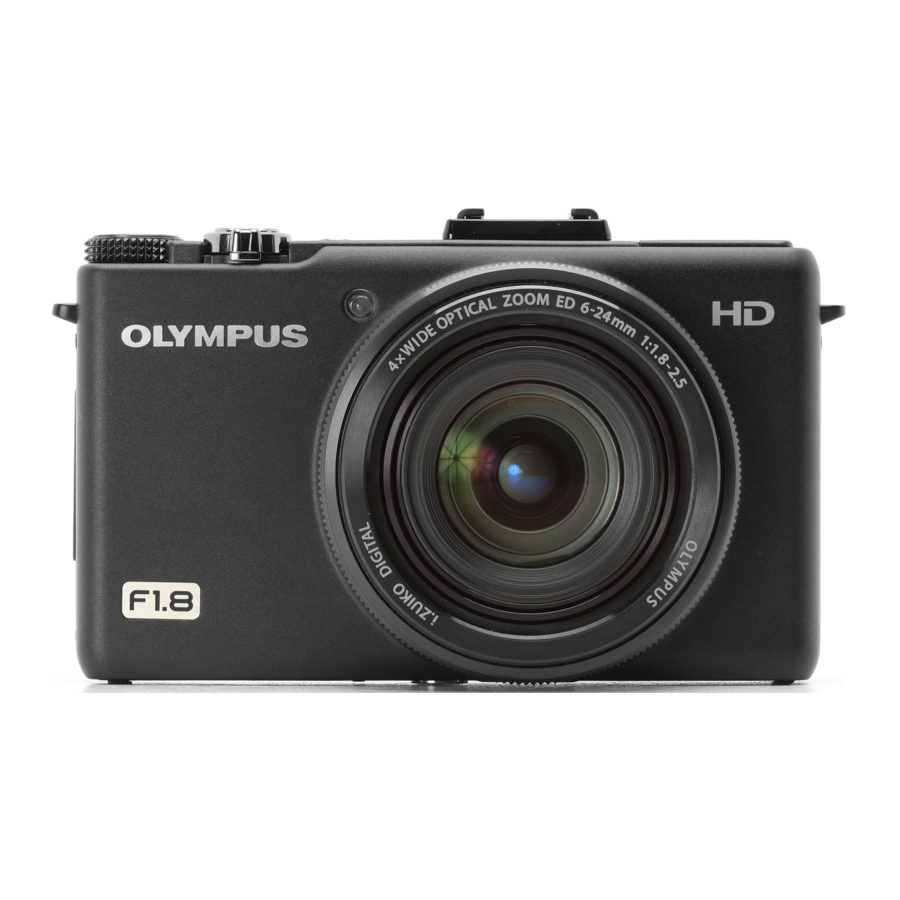Olympus XZ-1 Руководство по советам и рекомендациям - Страница 17
Просмотреть онлайн или скачать pdf Руководство по советам и рекомендациям для Цифровая камера Olympus XZ-1. Olympus XZ-1 30 страниц. Body black
Также для Olympus XZ-1: Технические характеристики (5 страниц)

XZ-1 Tips
page 17 of 29
some pretty ugly shadows. It also makes it very easy to blow the red channel, especially
when shooting red dominated subjects (human skin, cosmetics, and fall colors near dusk
and dawn when the light is warm).
Using an 80A will often let you get an interior architecture image in a single shot that
would have taken multiple shots and HDR to do otherwise. It also makes it much easier
to shoot incandescent or candlelit scenes without blowing the red channel.r
The "soft focus" filter
Using a Gaussian blur can only make a good-looking soft focus effect on things that are
not overexposed. For my own soft focus work (and the majority that I see from other
photographers) the "prettiest" soft focusing is the glow surrounding blown highlights:
candle flames, sparkling dew on flowers, the catch-lights in a woman's eyes, the glint of
jewelry. You can't get that right in PhotoShop.
A soft focus filter in front of the lens gives you a glow with size and density that are
proportional to how "blown" the blown area really is. So the glow around candles,
specular reflections, water drops, etc varies with the brightness and the size of the blown
area. And the transition from blown to not-blown on skin is much more natural with a
filter or lens than with a PS blur. You can get this same effect with the "soft focus" lenses
offered by Nikon, Canon, and Sony, but that's an expensive route taken only by serious
soft focus aficionados. The Tiffen soft focus or "center spot" (a personal favorite) or
Zeiss Softar are much less expensive than a soft focus lens, and you can use them at a
variety of focal lengths.
Infrared
The XZ-1's sensor can 'see' infrared light. Not very well, but it can, and so you can take
real infrared pictures. Exposure time in daylight is long... like 5 seconds... so you'll want
to put the camera on a beanbag, or on a tripod,
Exposure -- 5 secs at f/1.8 -- XZ-1 in Natural / Underwater color modes, or
Monochrome... 720nm IR filter over lens. False IR... color image into Photoshop, dupe
layer, Channel mixer, mono, 100 red, 200 green, -200 blue and constant +20 to start.
http://www.amazon.com/Opteka-720nm-Infrared-X-Ray-
Filter:
